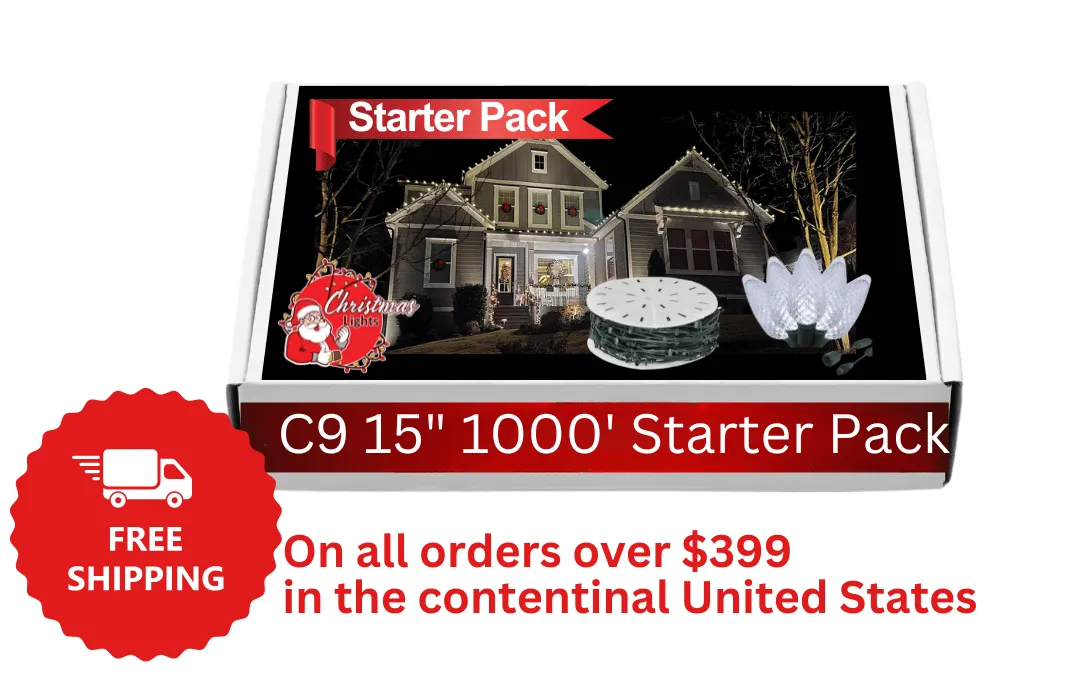Kickstart Your Christmas Lights Installation Business
with Our All-Inclusive Premium Starter Kits
C9 Christmas Lights Starter Packs 12" Spacing
What is included in the Christmas Lights starter pack?
The Christmas Lights starter pack is a comprehensive kit that provides everything you need to get started with your holiday lighting project. It includes all the necessary components, such as clips, male and female plugs, and an extra extension cord.
What specific items are included in the 1000 foot 15" C9 Christmas Lights starter pack?
The 1000 foot starter pack C9 15' spacing package includes the following items:
800 C9 LED Bulbs: These energy-efficient bulbs are the main component of your lighting display, providing bright and vibrant illumination.
800 Best Clips: These clips are designed to securely attach your light strings to various surfaces, ensuring a stable and professional-looking installation.
1000' Green 15" Spacing Socket Spool: This spool contains 1000 feet of green wire with sockets spaced every 15 inches, allowing for even distribution of your C9 bulbs.
250' Green Lamp Cord: This additional lamp cord provides extra length for your lighting setup, enabling you to cover larger areas or create extended displays.
50 Green Male Plugs: These plugs are used to connect your light strings to power sources or to join multiple strings together.
50 Green Female Plugs: These plugs are used to create a seamless connection between your light strings, allowing for a continuous and uninterrupted display.
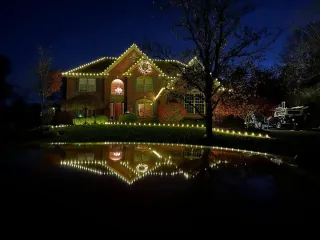
How many houses can I typically light up with a single 1000 foot starter pack?
On average, a 1000 foot starter pack is sufficient to light up approximately 5 to 6 houses, depending on the size and layout of each property.
This estimation is based on the standard components included in the starter pack, such as the 800 C9 LED bulbs and the 1000 feet of socket spool.
However, it's important to keep in mind that every project is unique, and the actual number of houses you can illuminate with a single starter pack may vary.
Factors such as the complexity of the designs, the distance between installation points, and the specific requirements of each client can all impact the coverage of the starter pack.
To ensure a smooth installation process and to accommodate any additional wiring needs, it's always a good idea to have some extra lamp cord on hand for extension purposes.
You may also want to stock up on extra female plugs to facilitate connections between multiple strands of lights or to create custom lengths as needed.
By being prepared with these additional components, you can easily adapt to the specific demands of each project and ensure that you have the flexibility to create stunning and professional-looking lighting displays, regardless of the number of houses you're working on.


Light Up the Night Expert Tips for Stunning Holiday Displays
As professional Christmas light installers, we at Christmaslights.io understand that creating a truly memorable holiday display goes beyond simply stringing up a few strands of lights. The magic lies in the artful use of different lighting patterns and effects to transform ordinary homes and businesses into winter wonderlands. In this comprehensive guide, we'll explore how to elevate your installations from good to extraordinary, using a variety of techniques and technologies.
Understanding Basic Lighting Patterns
Before diving into complex effects, it's crucial to master the basics. There are four fundamental lighting patterns that form the foundation of any great display:
1. Linear patterns: These involve straight lines of lights, often used to outline architectural features or create geometric shapes.
2. Radial patterns: Resembling a starburst, these patterns emanate from a central point, perfect for trees or circular decorations.
3. Clustered patterns: Grouping lights together creates focal points and areas of intensity in your display.
4. Random patterns: While seemingly chaotic, strategically placed random lights can add depth and interest to your overall design.
By combining these basic patterns, you can create complex and visually appealing displays that capture attention and imagination.
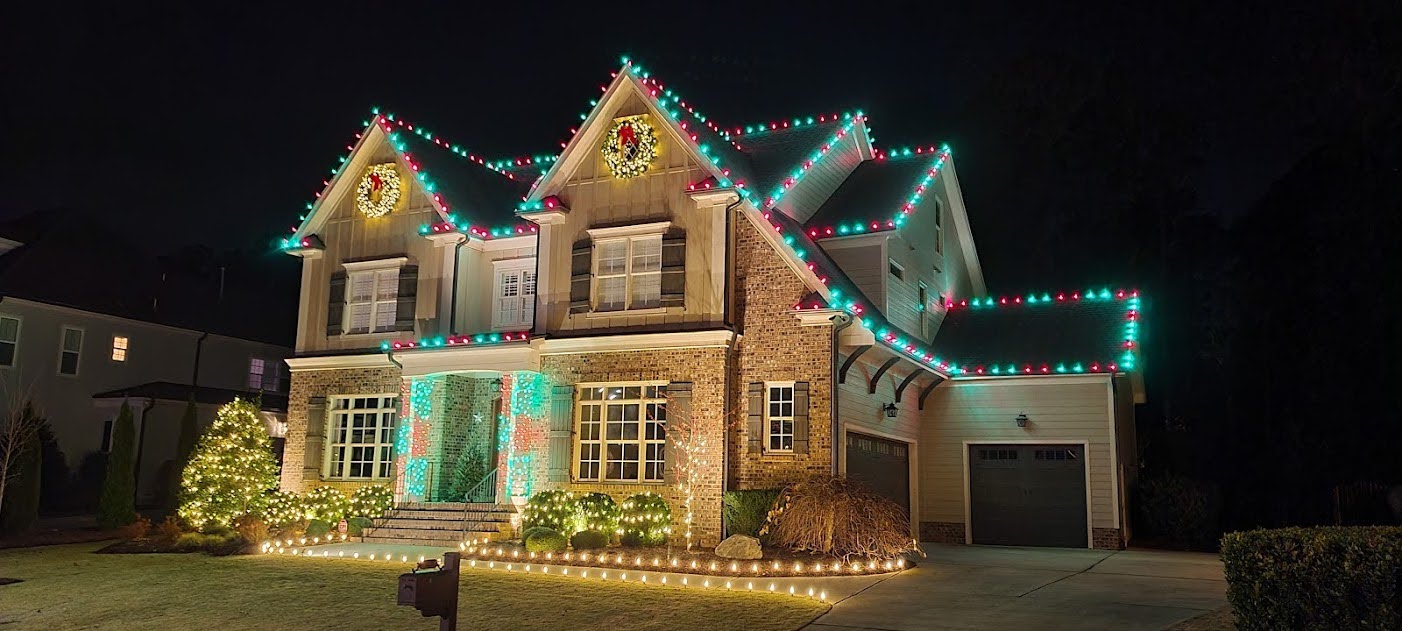
Exploring Advanced Lighting Techniques
Once you've mastered the basics, it's time to explore more advanced techniques:
Layering Lights
Layering involves using multiple types of lights at different depths to create a rich, multidimensional effect. For example, you might use string lights to outline a roofline, icicle lights along the eaves, and projector lights on the lawn. This technique adds depth and interest to your display.
Creating Depth with Foreground and Background Lighting
Use brighter, more prominent lights in the foreground and softer, subtler lighting in the background. This creates a sense of depth and makes your display more visually engaging. For instance, bright spotlights on a decorated tree in the front yard, with softer string lights on trees further back.
Using Negative Space Effectively
Remember, not every inch needs to be illuminated. Strategic use of darkness can enhance the overall impact of your lighting. Use negative space to create contrast and draw attention to key elements of your display.
Incorporating Movement and Animation
Static displays are beautiful, but adding movement can take your installation to the next level. Consider using chasing lights, fading effects, or even programmable LED systems to add dynamic elements to your design.
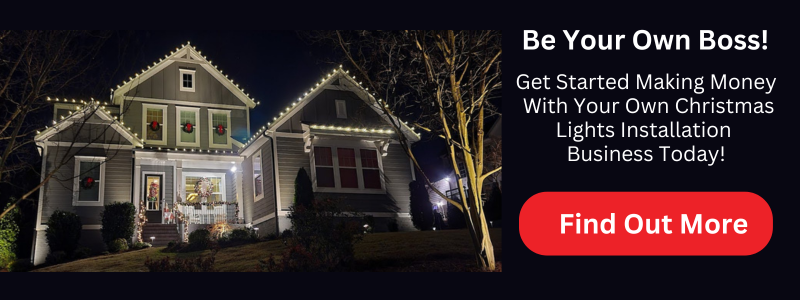
Popular Lighting Effects and How to Achieve Them
Let's explore some popular effects and how to create them:
1. Twinkling and chasing lights: Use specialized string lights or controllers to create a sparkling or running light effect.
2. Fading and color-changing effects: LED lights with built-in programs or smart controllers can produce smooth transitions between colors.
3. Icicle and dripping light effects: Icicle lights or specialized drip lights can create the illusion of falling snow or icicles.
4. Starburst and explosion effects: Use radial patterns with lights of varying intensity to create a burst effect.
5. Wave and ripple effects: Programmable LED strips or specialized controllers can create flowing, wave-like patterns.
Choosing the Right Lights for Different Effects
Selecting the appropriate lights is crucial for achieving your desired effects:
- String lights are versatile for outlining and filling spaces.
- Net lights work well for uniform coverage of bushes and hedges.
- Icicle and curtain lights create vertical cascading effects.
- Rope lights and flex neon are perfect for creating smooth, continuous lines.
- Projection and laser lights can cover large areas with patterns and moving effects.
- Smart lights and programmable LEDs offer the most flexibility for creating custom effects.
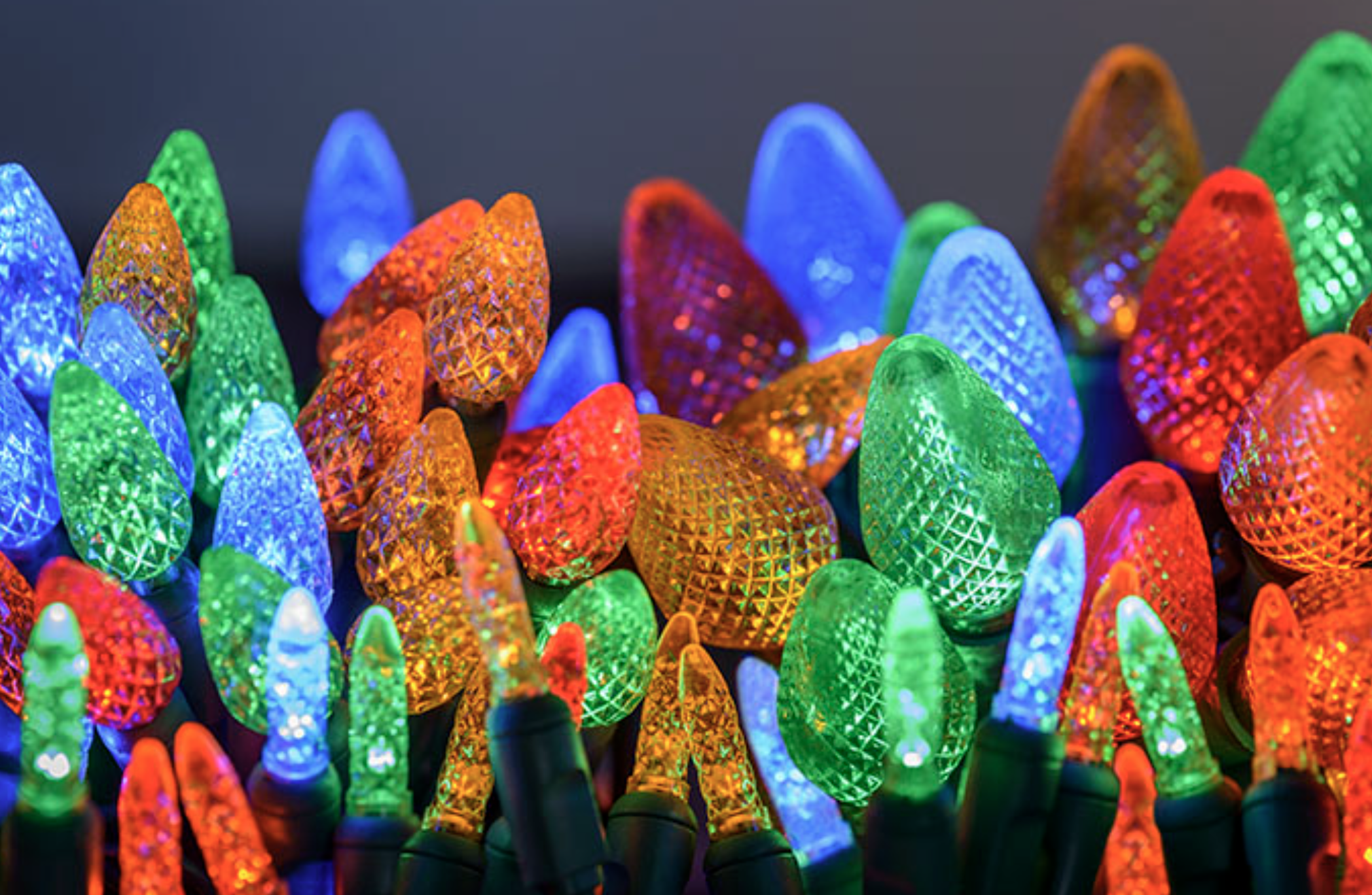
Creating Focal Points in Your Display
A well-designed display should guide the viewer's eye to key areas:
1. Highlight architectural features like columns, arches, or unique windows.
2. Emphasize trees and landscaping with uplighting or wrapped trunks and branches.
3. Create light sculptures or 3D effects using shaped wire frames covered in lights.
4. Use brighter or more colorful lights to draw attention to specific areas, like entryways or centerpiece decorations.
Balancing Different Lighting Elements
Creating a harmonious display involves balancing various elements:
1. Mix warm and cool lights to create contrast and depth. For example, combine warm white lights on a house with cool blue accents in the yard.
2. Combine static and dynamic elements. Use steady lights for the main structure and add moving elements for visual interest.
3. Integrate colored and white lights carefully. Use colored lights as accents to complement a base of white lights.
4. Blend different light sizes and intensities. Use larger, brighter bulbs for impact and smaller lights for detail work.
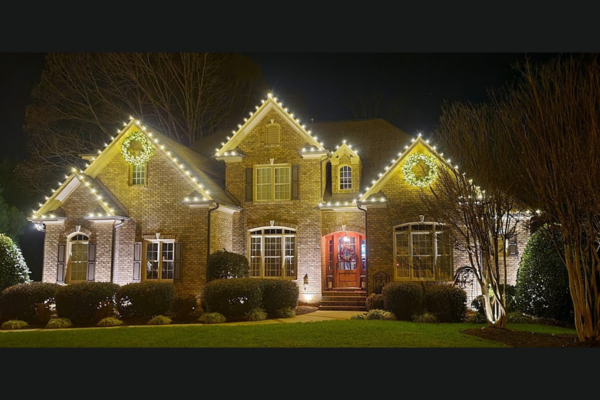
Designing for Different Home Styles
Adapt your lighting design to complement the architecture:
- Classic and traditional homes often look best with warm white lights and classic patterns.
- Modern and contemporary designs can handle bold colors and geometric lighting patterns.
- Rustic and farmhouse aesthetics pair well with warm lights and nature-inspired elements.
- Mediterranean and tropical styles can incorporate vibrant colors and playful patterns.
Technical Considerations for Complex Displays
As you create more intricate displays, keep these technical aspects in mind:
1. Power management: Calculate power requirements carefully and use appropriate extension cords and outlets.
2. Electrical safety: Always use outdoor-rated equipment and GFCI protection.
3. Weather-proofing: Ensure all connections are protected from moisture and use lights rated for outdoor use.
4. Controllers and timers: Utilize these to automate your display and create complex effects.
5. Troubleshooting: Be prepared to quickly identify and fix common issues like burnt-out bulbs or loose connections.
Planning and Executing Your Display
A successful installation starts with thorough planning:
1. Sketch out your design, considering the home's architecture and landscaping.
2. Test different combinations of lights and effects before final installation.
3. Install efficiently and safely, using proper equipment and techniques.
4. Fine-tune your display after dark, adjusting placement and effects as needed.
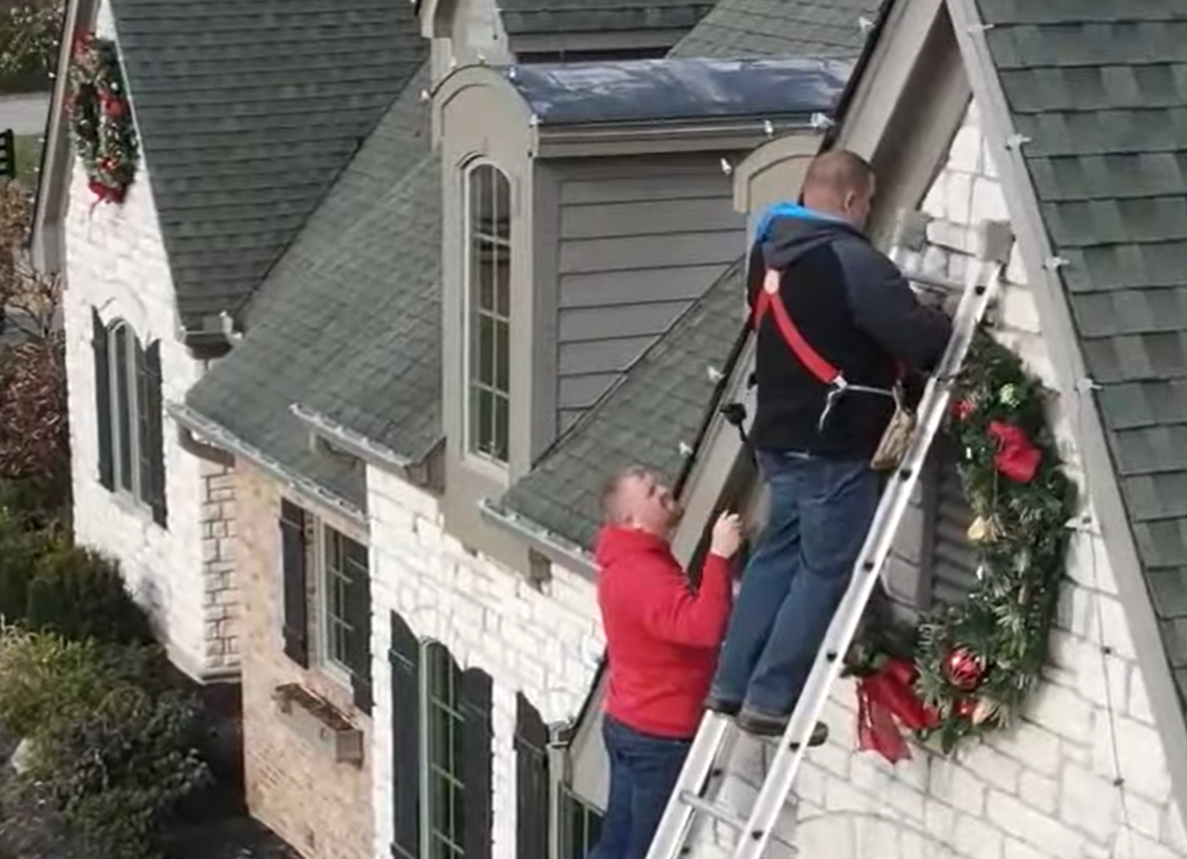
Enhancing Your Display with Complementary Elements
Take your display beyond just lights:
1. Incorporate non-lit decorations like wreaths, garlands, or figurines to add daytime appeal.
2. Use reflective ornaments or surfaces to amplify light effects.
3. Add sound and music synchronization for a truly immersive experience.
4. Consider subtle scent elements near entryways for a multi-sensory approach.
Staying Current with Lighting Trends
The world of holiday lighting is always evolving. Stay ahead of the curve by:
1. Offering eco-friendly and energy-efficient options to environmentally conscious clients.
2. Integrating smart home technology for easy control and customization.
3. Exploring new color trends and combinations each season.
4. Keeping an eye on emerging lighting technologies and incorporating them into your designs.
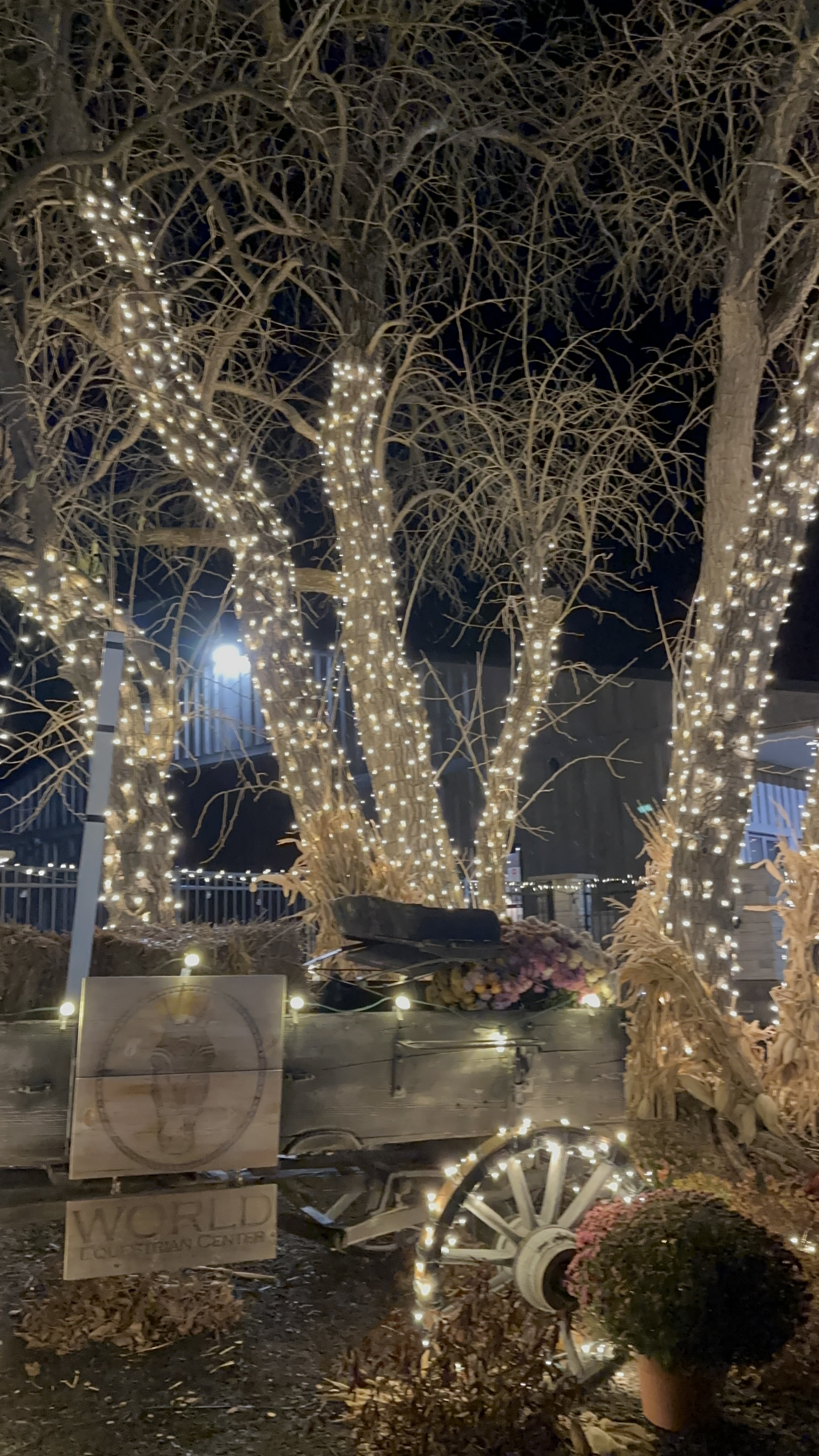
Creating a stunning holiday light display is a true art form, blending creativity, technical skill, and a deep understanding of light and color. By mastering different lighting patterns and effects, you can transform ordinary spaces into extraordinary winter wonderlands that delight and inspire.
Remember, the key to a great display lies in thoughtful design, careful execution, and attention to detail. Don't be afraid to experiment with new techniques and technologies to push the boundaries of what's possible.
At Christmaslights.io, we're committed to helping professional installers create magical holiday experiences. We hope this guide inspires you to take your installations to the next level, bringing joy and wonder to communities throughout the holiday season.
Don't forget to check out our wide range of professional-grade lighting products and installation tools at Christmaslights.io. From energy-efficient LED strings to advanced controllers, we have everything you need to bring your lighting visions to life.
Let's illuminate the world, one dazzling display at a time!

1. Q: What are the four basic lighting patterns mentioned in the post?
A: The four basic lighting patterns are linear patterns, radial patterns, clustered patterns, and random patterns.
2. Q: How can I create depth in my lighting display?
A: Create depth by using brighter, more prominent lights in the foreground and softer, subtler lighting in the background. Also, use layering techniques with different types of lights at various depths.
3. Q: What are some popular lighting effects for holiday displays?
A: Popular effects include twinkling and chasing lights, fading and color-changing effects, icicle and dripping light effects, starburst and explosion effects, and wave and ripple effects.
4. Q: How can I choose the right lights for different effects?
A: Choose lights based on the desired effect: string lights for versatility, net lights for bushes, icicle lights for cascading effects, rope lights for continuous lines, and programmable LEDs for custom effects.
5. Q: How do I create focal points in my lighting display?
A: Create focal points by highlighting architectural features, emphasizing trees and landscaping, creating light sculptures, and using brighter or more colorful lights to draw attention to specific areas.
6. Q: What should I consider when designing for different home styles?
A: Consider the architectural style of the home: use warm white lights for traditional homes, bold colors for modern designs, nature-inspired elements for rustic styles, and vibrant colors for Mediterranean or tropical homes.
7. Q: What are some technical considerations for complex displays?
A: Technical considerations include power management, electrical safety, weather-proofing, using controllers and timers effectively, and being prepared to troubleshoot common issues.
8. Q: How can I enhance my lighting display beyond just lights?
A: Enhance your display by incorporating non-lit decorations, using reflective surfaces, adding sound and music synchronization, and considering scent elements for a multi-sensory experience.
9. Q: What are some current trends in holiday lighting?
A: Current trends include eco-friendly and energy-efficient options, smart home integration, exploring new color combinations, and incorporating emerging lighting technologies.
10. Q: How should I plan and execute my lighting display?
A: Plan your display by sketching out your design, testing different combinations before installation, installing efficiently and safely, and fine-tuning your display after dark.









